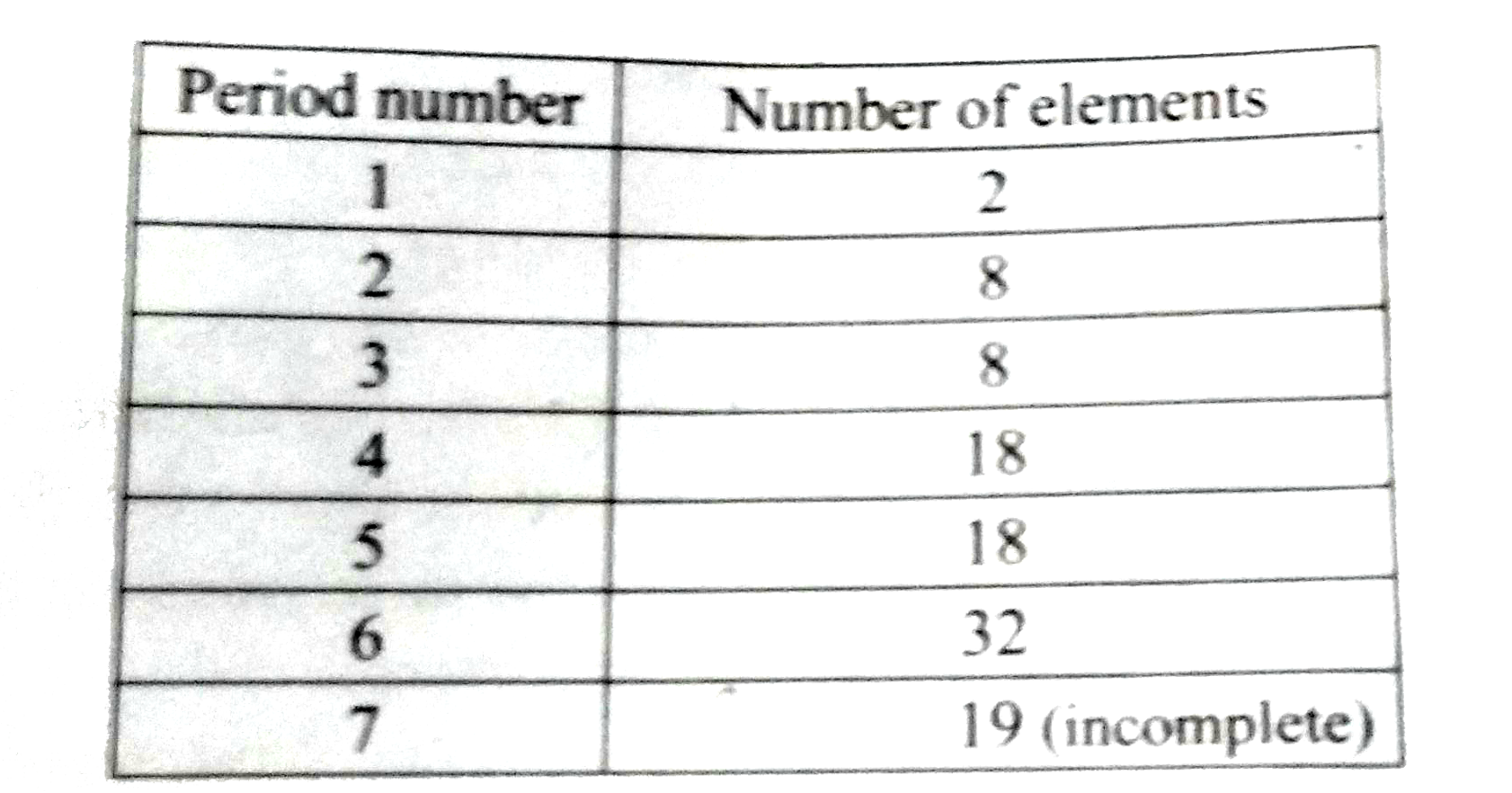Explain about the structural features of Moseley's long form of periodic table.Solution in Tamil
(i) The long form of periodic table of the elements is constructed on the basis of modern periodic law. The arrangement resulted in repeating electronic configurations of atoms at regular intervals.
(ii) The elements placed in horizontal rows are called periods and in vertical columns are called groups.
(iii) According to IUPAC, the groups are numbered from 1 to 18.
(iv) There are 18 vertical columns which constitute 18 groups or families. All the members of a particular group have similar outer shell electronic configuration.
(v) There are 7 horizontal rows called periods.

The elements are shown in the above table along with its atomic number.
(vi) The atomic number also indicates the number of electrons in the atoms of an element.
(vii) This periodic table is important and useful because we can predict the properties of any element using periodic trend, even though that element may be unfamiliar to us.
Topper's Solved these Questions
- PERIODIC CLASSIFICATION OF ELEMENTS BOOK - FULL MARKSCHAPTER - PERIODIC CLASSIFICATION OF ELEMENTS EXERCISE - Higher Order Thinking skills (HOTS) Questions
10 Videos
- PERIODIC CLASSIFICATION OF ELEMENTS BOOK - FULL MARKSCHAPTER - PERIODIC CLASSIFICATION OF ELEMENTS EXERCISE - Activity 3.1
1 Video
- PERIODIC CLASSIFICATION OF ELEMENTS BOOK - FULL MARKSCHAPTER - PERIODIC CLASSIFICATION OF ELEMENTS EXERCISE - Additional Questions(3 MARK QUESTIONS)
39 Videos
- HYDROGEN BOOK - FULL MARKSCHAPTER - HYDROGEN EXERCISE - Additional Questions Solved 5-Mark Questions
10 Videos
- PHYSICAL AND CHEMICAL EQUILIBRIUMBOOK - FULL MARKSCHAPTER - PHYSICAL AND CHEMICAL EQUILIBRIUMEXERCISE - ADDITIONAL QUESTIONS SOLVED (NUMERICAL PROBLEMS)
3 Videos
Similar Questions
Consider the isoelectronic species Na+,Mg2+,F− and O2−.The correct order of increasing length of their radii is:
View SolutionCovalent radii (in A) for some elements of different groups and periods are listed below. Plot these values against atomic number. From the plot, explain the variation along a period and a group.
2nd group elements : Be (0.89), Mg (1.36), Ca (1.74), Sr (1.91) Ba(1.98)
17th group elements : F (0.72), CI (0.99), Br(1.14). T (1.33)
3rd Period elements : Na(1.57), Mg(1.36). AI (1.25), Si(1.17). P(1.10), S(1.04). C1(0.99)
4th period elements : K(2.03), Ca(1.74). Sc(1.44). Ti(1.32), V(1.22), Cr(1.17), Mn(1.17) Fe(1.17). Co(1.16). Ni(1.15). Cu(1.17). Zn(1.25), Ga(1.25). Ge(1.22). As(1.21). Se(1.14). Br(1.14)
View SolutionWhy there is a need for classification of elements?
View SolutionExplain about the different industrial preparation of hydrogen.
View SolutionFind the value of Kc for each of the following equilibria from the value of Kp
(a) 2NOCl(g)⇔2NO(g)+Cl2(g),KP=1.8×10−2 atm at 500 K
(b) CaCO3(s)⇔CaO(s)+CO2(g),KP=167 atm at 1073 K
View SolutionExplain the merits of Moseley's long form of periodic table.
View SolutionMoseley's periodic table is based on atomic mass .
View SolutionExplain the salient features of periods in the modern periodic table.
View SolutionExplain the salient features of periods in the modern periodic table.
View Solutionदीर्घाकार आवर्त सारणी की प्रमुख विशेषताएँ लिखिए।
View Solutionदीर्घाकार आवर्त सारणी की प्रमुख विशेषताएँ लिखिए।
View SolutionExplain the salient features of periods in the modern periodic table.
View SolutionExplain the merits of Moseley's long form of periodic table.
View SolutionMoseley's periodic table is based on atomic mass.
View SolutionOn what basis are the elements arranged in Moseley's periodic table?
View Solution